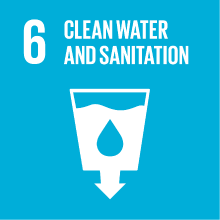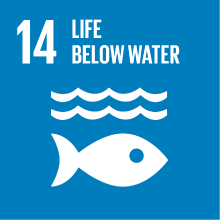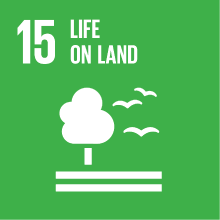GEOCHEMISTRY
- Academic year
- 2020/2021 Syllabus of previous years
- Official course title
- GEOCHIMICA
- Course code
- CT0238 (AF:320623 AR:172494)
- Teaching language
- Italian
- Modality
- On campus classes
- ECTS credits
- 6
- Degree level
- Bachelor's Degree Programme
- Academic Discipline
- GEO/08
- Period
- 2nd Semester
- Course year
- 2
- Where
- VENEZIA
- Moodle
- Go to Moodle page
Contribution of the course to the overall degree programme goals
This teaching aims to provide the basic knowledge of Geochemistry necessary to understand the environment. The teaching focuses on the evolution of the planet Earth, on the processes of generation, transport and transformation of matter, on the behavior, distribution and biogeochemical interactions of the elements occurring on the Earth's surface. The concepts of Geochemistry will be applied to different environmental matrices such as rocks, sediments, soils, surface and underground waters, gases and atmospheric particulates. In addition, this teaching aims to provide a multidisciplinary view of the environment by applying chemical and chemical-physical principles to explain the mechanisms controlling the geological systems and affecting the biological sphere.
Expected learning outcomes
1. Knowledge and understanding
1a. Knowing the main concepts of Geochemistry and knowing correct geochemical terminology;
1b. Understanding the processes that shaped the Earth to the current form, composition;
1c. Understanding the mechanisms regulating the geochemical spheres;
1c. Understanding the fluxes of matter and energy and the anthropic pressures that have (and will increasingly have) important impacts on the environment and on the climate;
2. Ability to apply knowledge and understanding
2a. Knowing how to correctly use terminology and geochemical principles in all application and communication processes of Environmental Sciences;
2b. Knowing how to identify and quantify the geochemical processes that shaped the Earth and its geochemical spheres;
2c. Knowing how to identify and discriminate the geochemical processes between natural and anthropized environments;
3. Ability to judge
3a. Knowing how to formulate and argue hypotheses on the basis of the concepts learned during the lessons;
3b. Knowing how to apply geochemical knowledge and tools to explain natural phenomena and to solve environmental problems;
3c. Knowing how to apply a critical and multidisciplinary approach to the assessment of complex environmental problems;
4. Communication skills
4a. Knowing how to communicate geochemical concepts in science, using appropriate terminology;
4b. Knowing how to interact with different professional figures that a graduate in Environmental Sciences will find during his/her professional career, such as biologists, chemists, geologists, physicians, epidemiologists, as well as with figures of non-scientific fields (politicians, economists, etc.);
4c. Knowing how to simplify and summarize the concepts of Geochemistry for the dissemination of data to the general public, using simple and direct terminology;
5. Learning skills
5a. Knowing how to apply the concepts of geochemistry to real case studies;
5b. Knowing how to read environmental processes with a geochemical perspective;
5c. Knowing how to critically consult the reference texts and how to interpret the bibliography that will be proposed during the course;
5d. Knowing how to process geochemical data and apply appropriate statistical and geostatistical analyzes during exercises.
Pre-requirements
Contents
Section 1 (basic concepts) briefly introduces and summarizes key concepts for the remaining parts of the course, i.e. the atom structure, isotopes, periodic properties, valence states, chemical bonds, state functions (Entropy , Enthalpy, Gibbs Free Energy), phase diagrams and chemical potential. The influence of the periodic properties of the elements on their geochemical behavior is examined.
Section 2 (cosmochemistry and origin, evolution and structure of Planet Earth) describes the nucleosynthesis, the origin and evolution of the solar system and terrestrial planets with an introduction on the composition of meteorites. The origin of the Earth, the processes of condensation, homogeneous /heterogeneous accretion, the internal structure of the Earth, and the genesis and evolution of the Earth's crust. Key concepts of Geochemistry are presented, such as the geochemical differentiation of the Earth and the origin of its oceans and atmosphere, the Goldschmidt rules and the geochemical classification of elements in atmophiles, lithophiles, siderophiles and chalcophiles.
Section 3 (lithosphere) analyzes the abundance and distribution of the elements in the Earth's crust. The weathering, the chemical alteration of minerals and rocks (dissolution, oxidation, hydration and hydrolysis), the solubility of CO2, the abundance and chemical speciation of carbon in solution, and the role of carbonates. Introduction to the properties of clay minerals, introduction to soils, introduction to the organic geochemistry.
Section 4 (atmosphere) deals with the origin, evolution, structure and chemical composition of the atmosphere, with particular attention to the troposphere and stratosphere. Solubility and reactivity of the gaseous species present in the atmosphere, geochemistry of the aerosol system, the role of atmospheric (aeolian) transports of crustal material in the geochemical cycles, the role of volcanoes on climate, the role of volcanic activity on the composition of the atmosphere and on aerosol, urban and regional air pollution, health effects and influence of airborne particles on climate change.
Section 5 (hydrosphere) deals with the structure and properties of water, chemical equilibria in the aqueous phase and presents the geochemistry of ocean, continental and meteoric waters. The origin of dissolved components, particulates and colloidal systems, geochemical mobility, the role of ionic potential, pH, Eh, and humic substances.
Section 6 (biosphere and geochemical cycles) introduces the (bio)geochemical cycles, analyzing the reservoirs and the pathways that chemical elements follow in the surface and crust of the Earth. The main cycles are treated: water, carbon, nitrogen, phosphorus, sulfur. The interactions between the various geochemical cycles are discussed.
Section 7 (anthroposphere) discusses the anthropic impact on the geochemical cycles with the analysis of some case studies. Some real case studies are presented and are interpreted starting from the geochemical associations of the elements. Some methods of statistical and geostatistical data processing are also briefly presented. Some geochemical datasets will be analyzed with statistical tools and geographic information systems (GIS).
Referral texts
Dongarrà, G., Varrica, D., Geochimica e Ambiente. EdiSES ed., Napoli, 2004. ISBN: 978-8879592826 [https://www.edisesuniversita.it/default/geochimica-e-ambiente.html ]
Some optional books and supplementary readings are available at the University library system (Scientific campus, alpha building) or upon request to the teacher:
1) Holland, H.D., Turekian K.K. (Eds.), Treatise On Geochemistry. Volumi 3-6, 8 e 9. Elsevier, 2003. ISBN: 978-0080437514 [https://www.sciencedirect.com/referencework/9780080983004/treatise-on-geochemistry ]
2) McSween H.Y., Richardson S.M. Jr, Uhle M.E., Geochemistry: Pathways and Processes. Columbia University Press, 2003. ISBN: 978-0231124409 [http://cup.columbia.edu/book/geochemistry/9780231124409 ].
3) Ryan P., Environmental and Low Temperature Geochemistry. Wiley-Blackwell, 2014. ISBN: 978-1-405-18612-4 [https://www.wiley.com/en-us/Environmental+and+Low+Temperature+Geochemistry-p-9781405186124 ]
4) White W.M., Geochemistry. Wiley-Blackwell ISBN: 978-0-470-65668-6 [https://www.wiley.com/en-us/Geochemistry-p-9780470656686 ]
Assessment methods
Type of exam
Teaching methods
All lessons are provided as PowerPoint presentations and are distributed at weekly-basis to students by using the Moodle teaching platform. In the same way, the case studies discussed during the lessons and the tracks to perform the exercises will also be provided.
Students are invited to periodically consult Moodle to be up to date on lessons.
2030 Agenda for Sustainable Development Goals
This subject deals with topics related to the macro-area "Natural capital and environmental quality" and contributes to the achievement of one or more goals of U. N. Agenda for Sustainable Development



